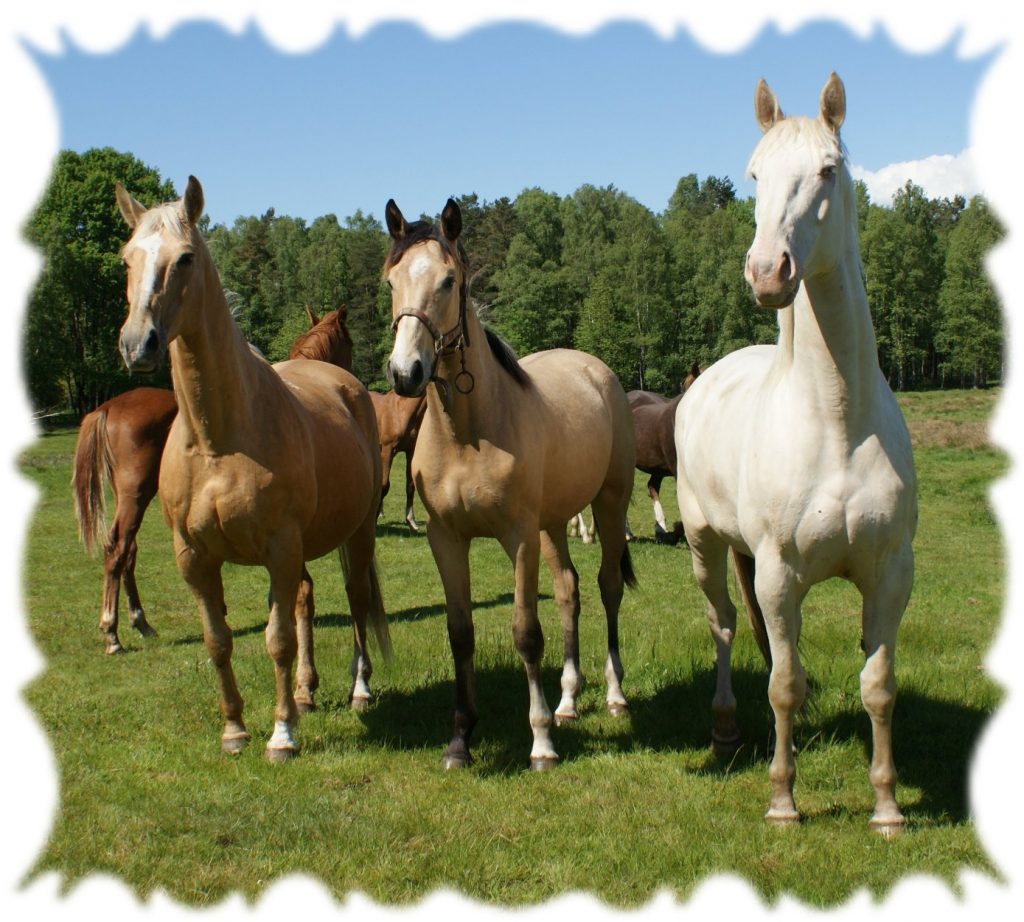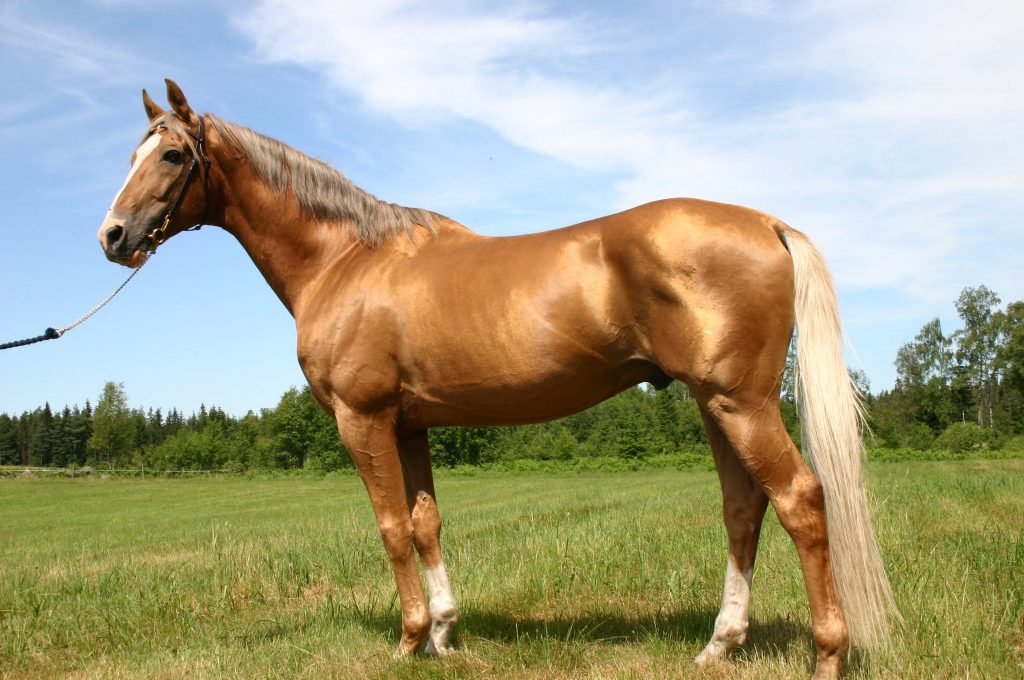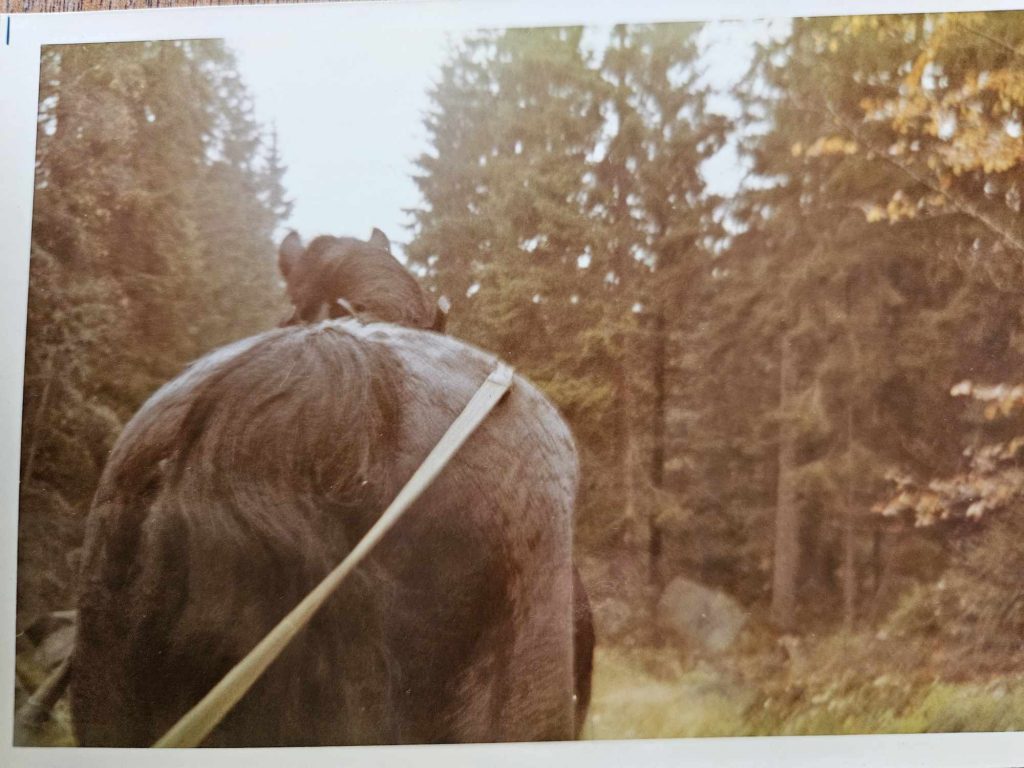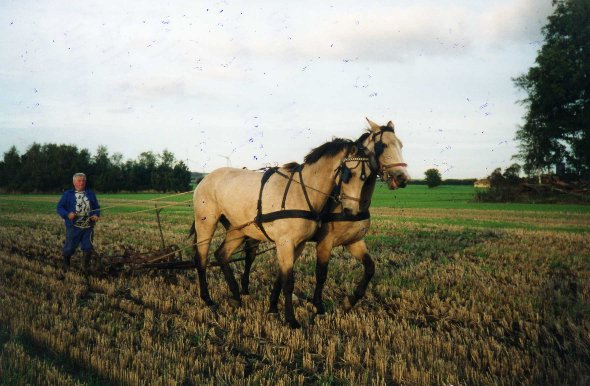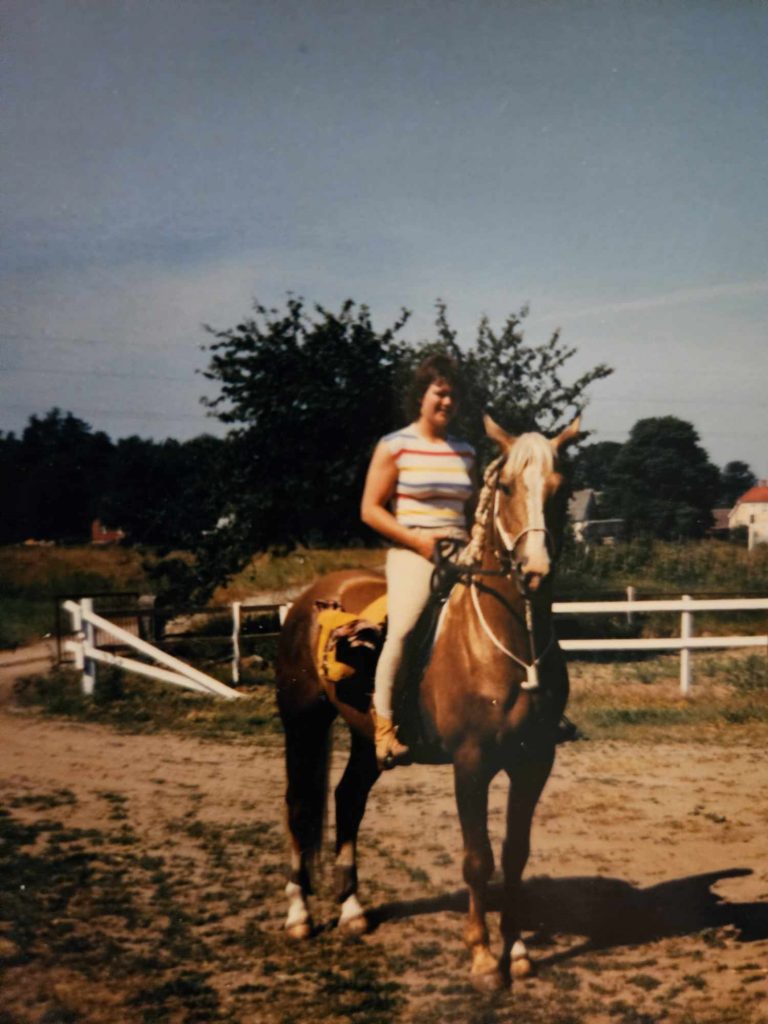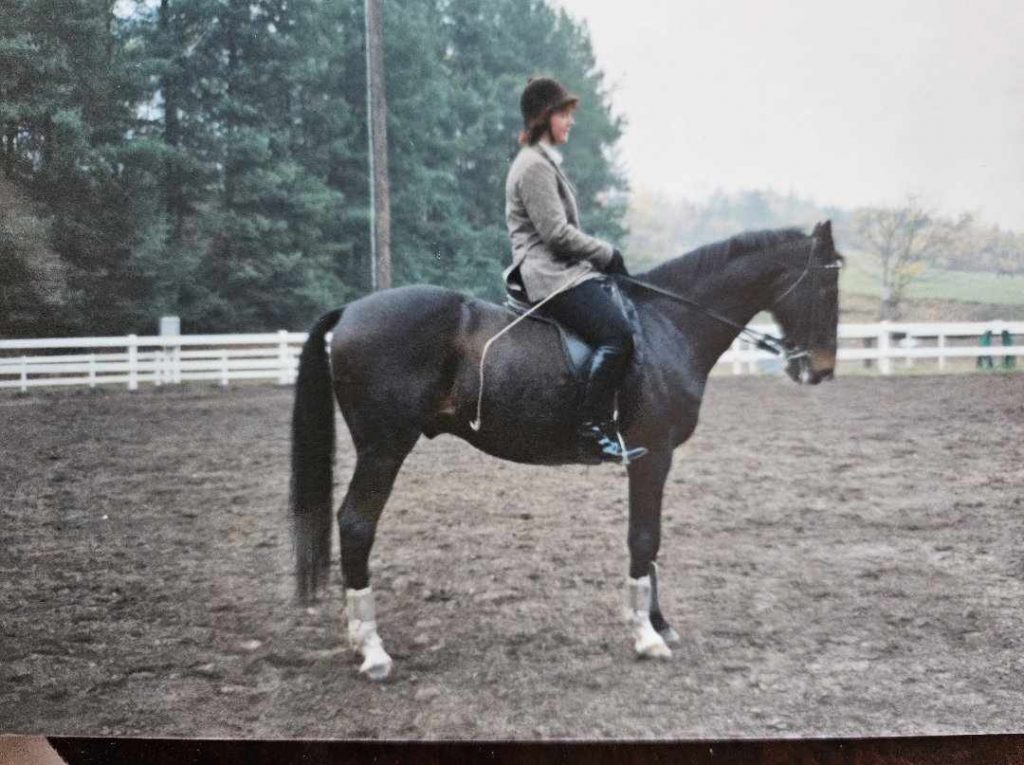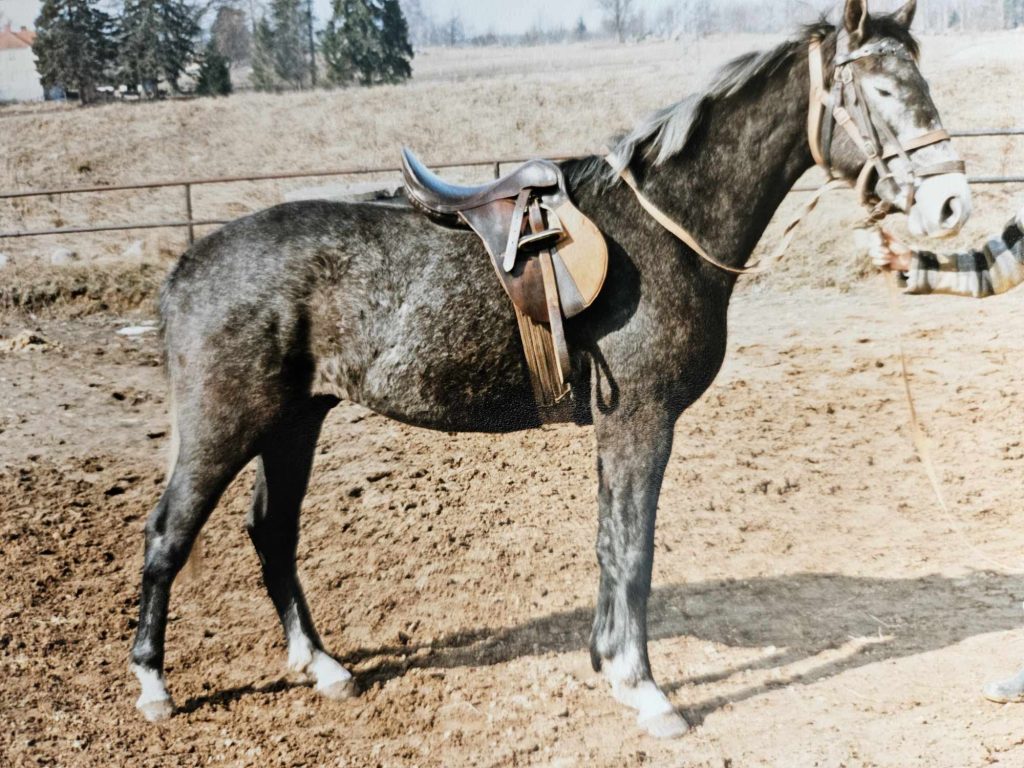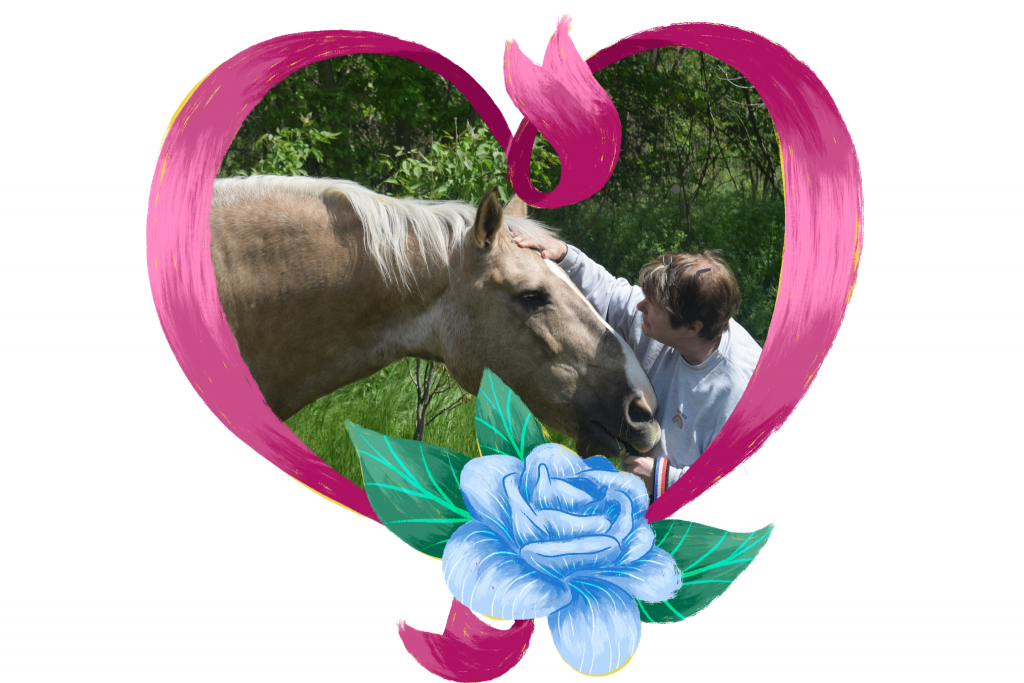🐴 Positivt og negativt – to sider af samme sag
Der er billeder, der sætter sig fast på nethinden for livet. Et af de billeder bærer jeg med mig fra min allerførste rideskole – en scene, der både formede mig og åbnede mine øjne for, hvordan vi behandler vores heste. I dag vil jeg dele den historie. Ikke for dramatikkens skyld, men for at vise, hvorfor hestevelfærd er noget, vi virkelig må tale om – ærligt og åbent.
Da jeg startede min blog og min podcast, lovede jeg mig selv at holde det hele i en positiv tone. Jeg var så træt af alt det negative, der flød rundt på nettet. Med tiden har jeg fundet mange sjove og varme historier fra fortiden. Men når jeg sætter mig ned og virkelig tænker tilbage, så dukker også de tunge minder op.
Og selvfølgelig ved jeg, at hvor der er noget godt, er der også noget dårligt. Og ofte er det netop i det svære, vi lærer mest.
Et af disse tilbageblik fører mig til min første rideskole – et sted jeg elskede. Det var mit fristed væk fra skolen, hvor jeg ikke rigtig havde nogen nære venner. Jeg havde briller og var god til både at skrive og regne, og det gjorde mig ikke populær blandt dem, der mobbede.
Når jeg lukker øjnene og tænker tilbage, er det første billede, der dukker op, vores ridelærer Henry Thomsen, som med al sin kraft står og pisker Ali – en hest, der er bundet op i en spil, og som forsøger at krybe helt op i krybben, med skrækslagne øjne, sveden løbende og hele kroppen rystende.
Det er et billede, der har brændt sig fast på bagsiden af mine øjenlåg. Det er umuligt at forklare hele situationen med ord – der var lugte, stemninger, følelser og frem for alt en frygt for ikke at kunne gøre noget. Jeg var omkring 10-11 år gammel.
Tidligere den dag havde Thomsen haft en time med de “øvede” ryttere. Han havde forsøgt at “lære” Ali noget ved at slå med pisken. Ali svarede med et bagben lige i Thomsens ribben, så han mistede pusten og faldt omkuld. En halv time senere gik han ind i stalden for at “lære Ali, at det må man ikke”. Vi børn så det hele, men ingen kunne gøre noget – indtil en voksen kom og sagde til Thomsen, at Ali nok havde lært, hvad han skulle.
Thomsen havde et alkoholproblem, og der herskede generelt kaos på rideskolen i den periode. I mit næste blogindlæg vil jeg fortælle mere om, hvad der skete. Men lige her vil jeg bruge denne oplevelse til at give et budskab.
Denne oplevelse åbnede mine øjne. Først og fremmest: Man straffer ikke en hest en halv time efter noget er sket. Og endnu vigtigere – man straffer ikke en hest for at sparke mod en pisk. Det er en helt naturlig reaktion. Pisken burde slet ikke have været der til at begynde med.
Jeg fortæller denne historie for at vise, hvad jeg står for i dag. Mange mennesker (forhåbentlig) har aldrig set sådan noget. Og nogle forstår måske stadig ikke, hvad hestevelfærd handler om. Der er grader af alting – men i mine øjne er Thomsen et tydeligt eksempel på, hvordan man ikke skal gøre.
Så er der dem, der ønsker bedre præstationer fra deres hest og tager sporer, piske og skarpe bid i brug for at straffe, når hesten ikke adlyder. Og så er der dem, der straffer ud fra frygt – for at beskytte sig selv, når en hest bukker, tramper eller gør noget farligt. Jeg har selv stået der mange gange. Jeg har arbejdet med mange forskellige heste – egne hingste og heste, jeg aldrig havde mødt før. Set i bakspejlet kunne mange situationer være håndteret anderledes. Men i øjeblikket føltes det som selvforsvar.
Jeg tror, at én af grundene til, at nogle mennesker ikke tager imod den nye tanke om hestevelfærd, er frygt – frygt for, at det går for vidt, så man ikke længere må kræve respekt fra hesten. Men at støtte hestevelfærd betyder ikke, at hesten bare skal gøre, som den vil. Det er som med børn – de skal lære at sidde stille ved bordet, gå i skole og kunne klare sig som voksne. Men vi behøver ikke at slå børn for at lære dem det. De kan godt respektere voksne, hvis vi viser dem vejen.
Respekt er noget, man får fra det individ, man arbejder med – hvis man er en god lærer. Hvis man er konsekvent og viser vejen på den rette måde. Respekt er ikke noget, man slår sig til. Hvis man vil slås, så slår individet tilbage.
Respekt handler om at give og tage. Om at kunne læse det individ, man arbejder med – og forstå, hvad der påvirker det, og hvad der ligger bag. Respekt kommer med viden – og frem for alt med selvindsigt.
Det er os mennesker, der skal kunne hjælpe hesten – uden vold – til at blive en ven. En, der giver os lige så meget glæde, som vi giver den.



